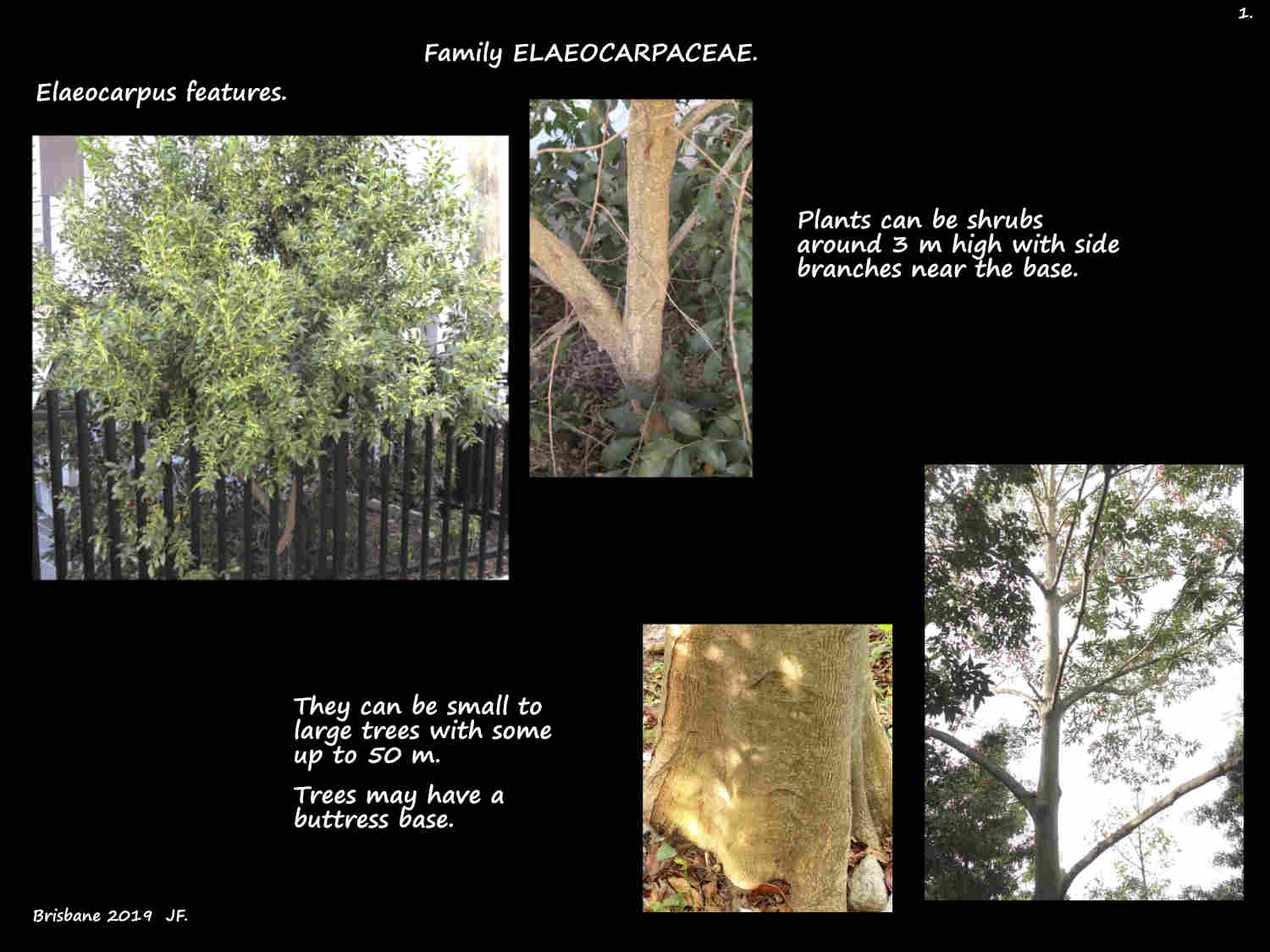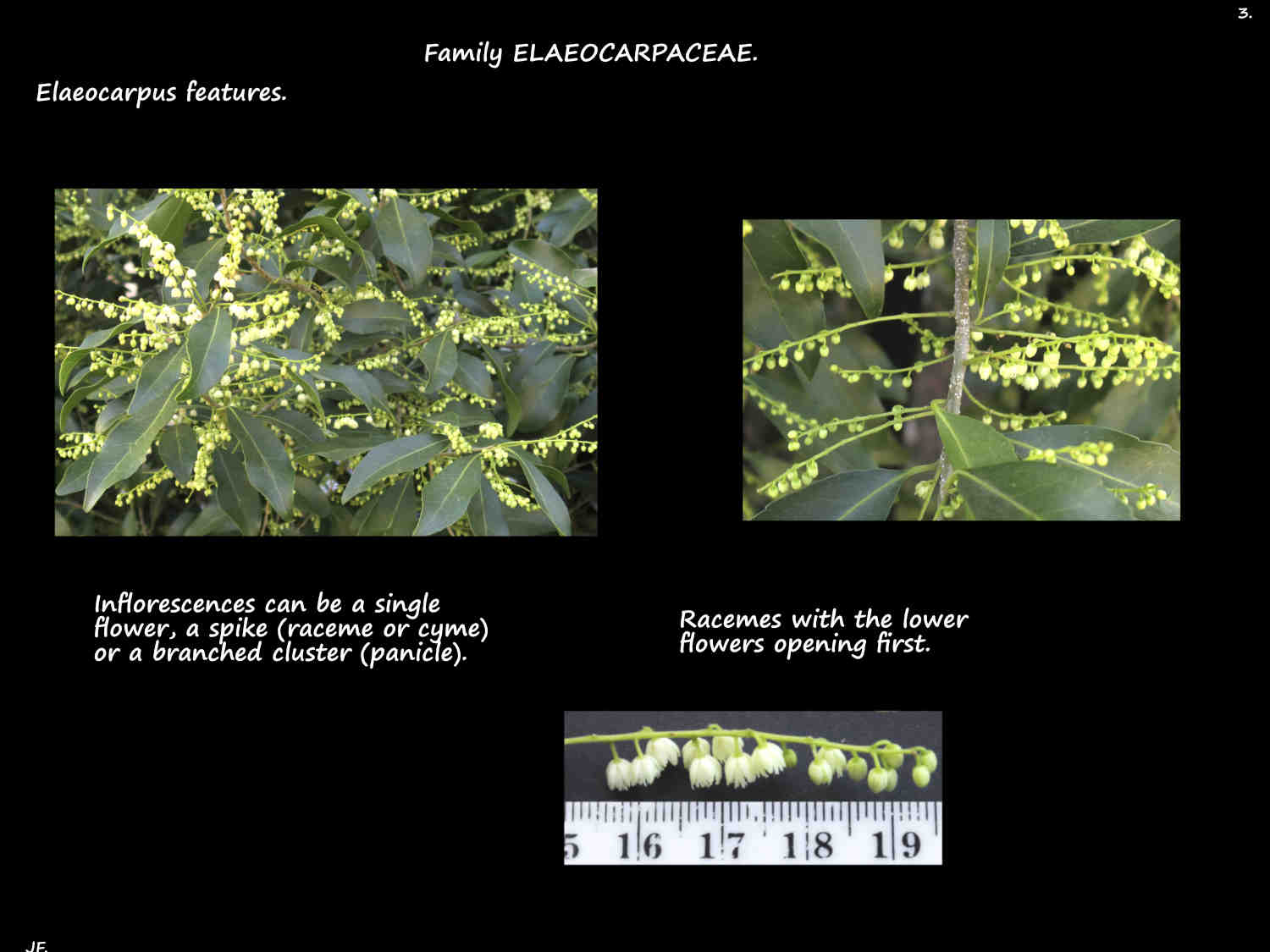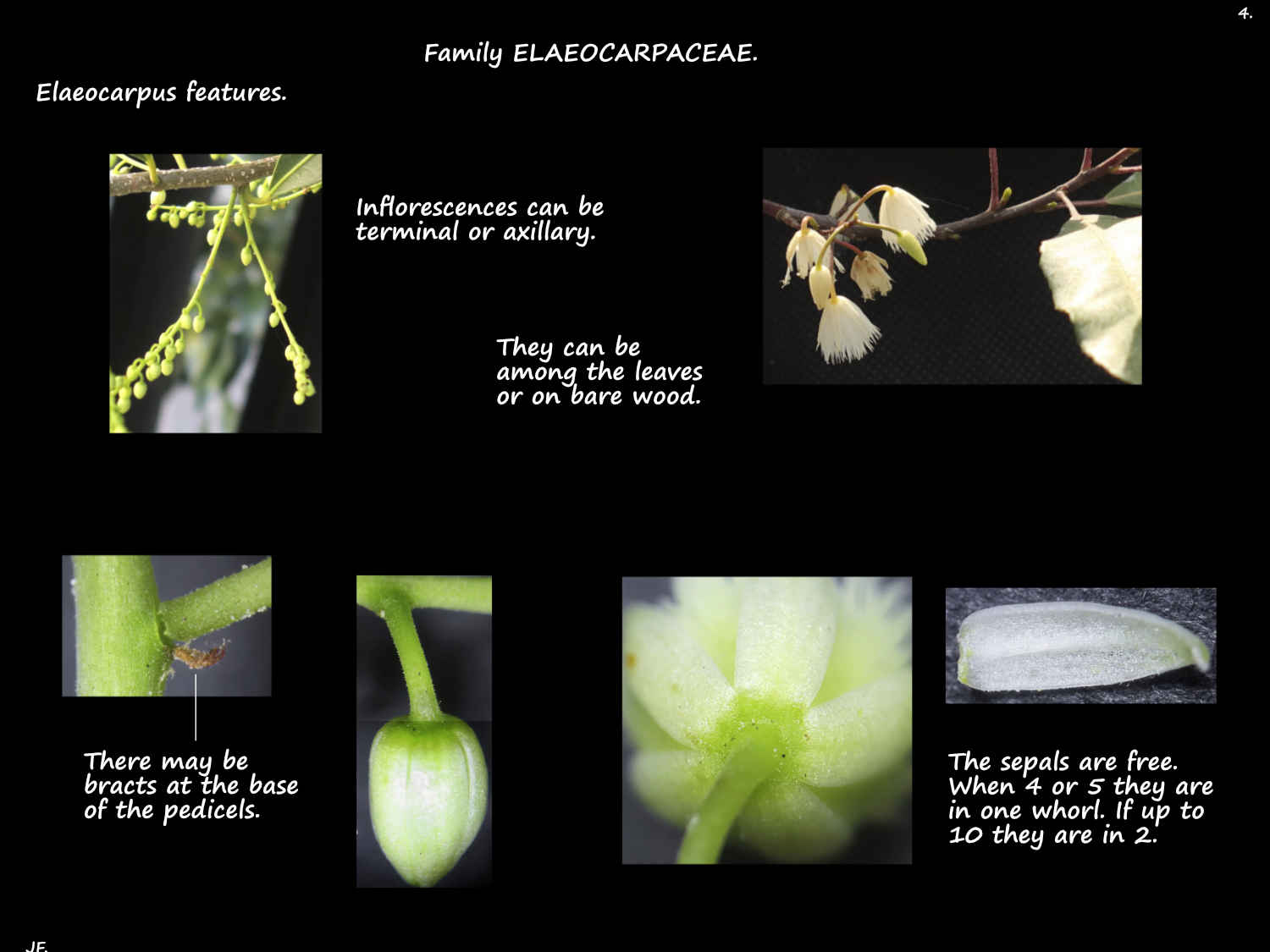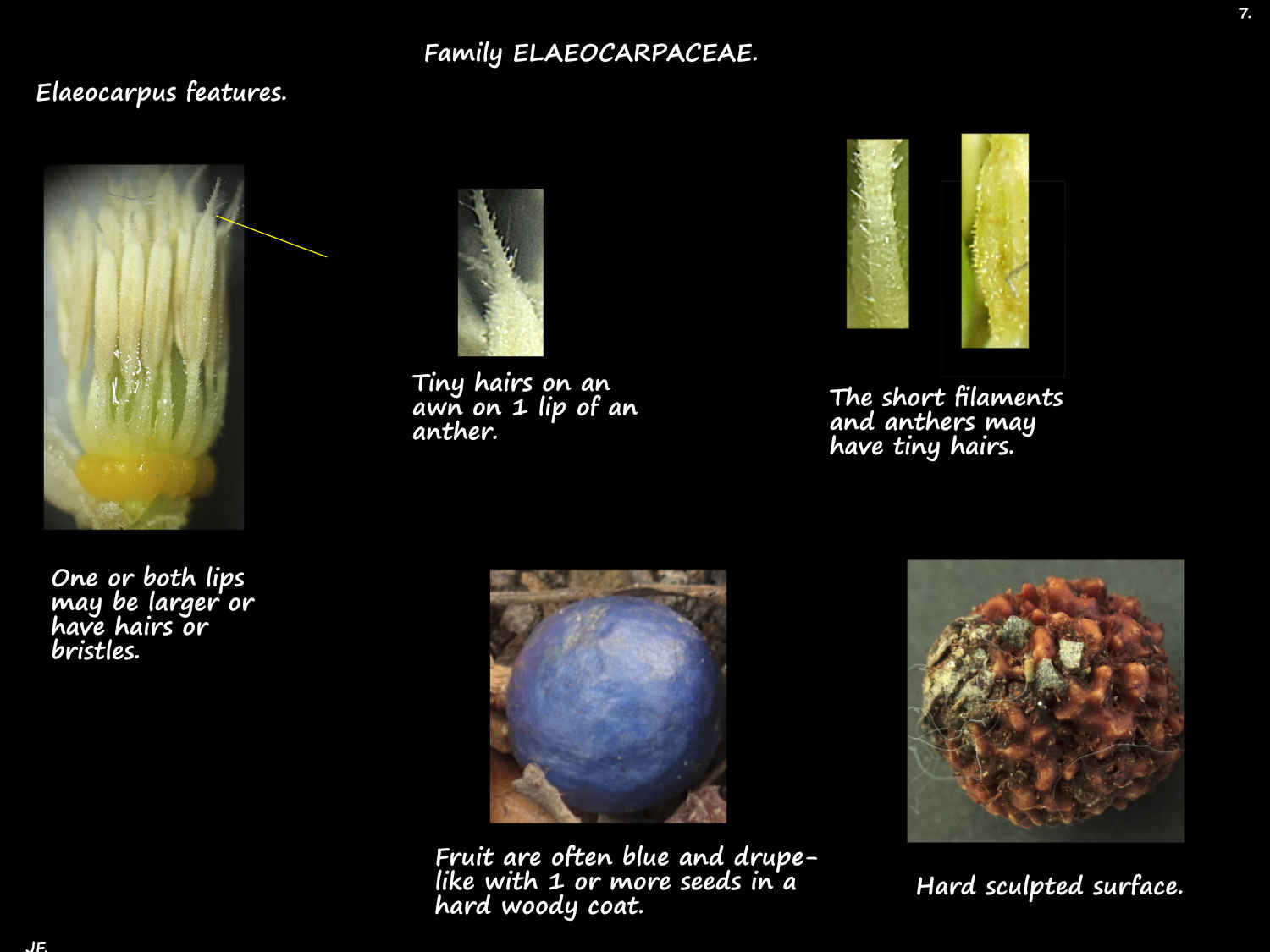Elaeocarpus.
This is the largest genus in the family with 484 species (Plants of the World Online).
Species are native to a large area including the Indian and Pacific Oceans, Asia, Indo-China and Australia.
Most are trees that can be up to 40 m high and there are a few shrubs.
Trunks often have a wide buttress base even when small.
Young branches have stellate hairs that are gradually lost.
Leaves are alternately arranged usually in a spiral but occasionally they are opposite.
They are on a petiole that is often swollen at both ends or just where it meets the blade.
Linear or occasionally leaf-like stipules at the base of the petiole usually fall very early.
The blade is entire or has 2 basal lobes (auricles) that may give the appearance of a tri-lobed leaf.
The edges have irregular teeth with the basal ones usually having glands.
Inflorescences are branched clusters (panicles).
The terminal branches are racemes with the flowers, on a pedicel opening from the base first.
Inflorescences may be near the branch ends among the leaves or on bare wood (ramiflorous).
In either case they are on short woody twigs below the petioles or old leaf scars.
The calyx has 4 or 5 free sepals that usually have hairs on the outer surface.
The 4 or 5 free white or pink petals usually have a tip that is deeply lobed.
Between the petals and stamens is a nectary that is usually lobed but sometimes a ring.
The reproductive parts are on a short stalk or gonophore derived from the receptacle (top of the stem).
Flowers are bisexual or male.
The 8 to numerous stamens have short free filaments.
The usually longer anthers open inwards through apical pores.
The pores may extend down for a short distance on both side of the anther forming 2 lips or teeth.
One lip may be longer or there may be bristles or awns on 1, or less commonly both teeth.
The superior ovary, on the gonophore has 2 to 5 (7) locules with 2 or more ovules in each.
It is laterally compressed and has short hairs.
The thin style has a simple or slightly lobed stigma.
The fruit are drupe-like with up to 5 seeds in a hard coat with a nodular and ridged surface.
Mature fruit are usually blue.
******************************
Species of Eleaocarpus available in Australian nurseries include:
Elaeocarpus eumundi a native tree to 7 m high and 2 m wide with tinted new leaves and cream flowers.
Elaeocarpus grandis the Blue Quandong up to 40 m high has white flowers with highly lobed petals and blue fruit.
Eleaocarpus hookeriana is a New Zealand tree up to 24 m high.
Young leaves are irregularly lobed and older ones toothed. It has green to greenish-white flowers.
Elaeocarpus obovatus.
The Hard quandong, a native tree to 40 m (6 m in cultivation) high has white flowers and blue fruit.
Elaeocarpus reticulatus or Blueberry ash is up to 10 m high and around 3.5 m wide at the base.
It has long leaves and white or occasionally pink flowers.
J.F.








